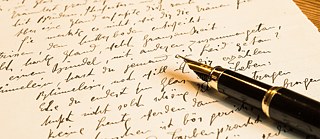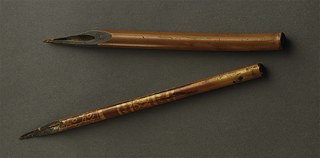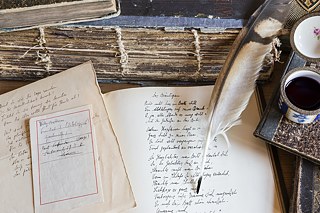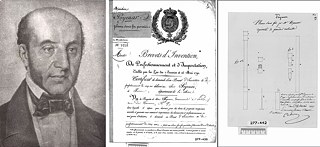The fountain pen
A spotless record

Contracts, love letters, school essays – ink blots have ruined many a written document over the years. Happily though, in Europe the simple quill pen developed into a sophisticated writing instrument: the fountain pen.
Theologian Martin Luther, author Theodor Fontane and archaeologist Johann Joachim Winckelmann were all immortalized in oil, quill in hand, reflecting on the next lines they planned to write. What these painting conceal, however, is just how troublesome writing with a quill used to be. In a letter Johann Wolfgang von Goethe, who wrote thousands of pages over the course of his life, once complained: “While ink greatly improves the mind, it annoys us where it is not meant to find. The written word is like pearls on a string, but a blot of ink is a truly evil thing!”
Thanks to the fountain pen, the leading minds of today no longer have to fear disfiguring important documents with splashes and splotches of ink. Used by schoolchildren and presidents alike to jot down their thoughts, much like cursive writing, the history of the fountain pen is full of twists and turns.

Between the second and fourth centuries A.D., people gradually shifted from writing with reed pens to quills. One of the first records of the precursor to today’s fountain pen was set out in German scholar Daniel Schwenter’s 1636 Deliciae Physico-Mathematicae.
In it the mathematician and professor of Oriental languages describes a writing instrument made from two quills, one tucked inside the other to serve as a reservoir. The inside quill was filled with ink and sealed with a cork. Then the ink was pressed through a small hole in the cork where it was transferred onto paper via the second quill.

Roughly 200 years would pass until Romanian Petrache Poenaru patented his first fountain pen in France. Poenaru, who would go on to design Romania’s educational system, studied cartography in Paris. In 1827, he was recorded there as the inventor of the “Plume portable sans fin qui s’alimente elle-même avec de l’encre” – “the never-ending portable pen that recharges itself with ink” with a built-in ink reservoir. And while this meant writers no longer had to dip their pens into an inkwell, the new writing instrument was far from blot-proof.
Shortly afterwards, Scot Robert William Thomson entered the stage. Born in 1822 as the eleventh of twelve children, Thomson attracted attention as a boy for his creative talent. By the age of 17, he had already devised a laundry mangle, a ribbon saw and a rotary steam engine. And while the inflatable tyre is considered his most lasting and useful invention, the modern fountain pen might not exist in its present form without his involvement.
In 1849, Thomson applied for a patent for his Fountain Pen, which he presented two years later at the World Exhibition in London. This fountain pen consisted of a tapered glass tube that could be filled with ink and a rubber insert that took advantage of the capillary effect, which is why liquids rise in thin tubes, to move the ink. Thomson had found a way to “spoon feed” ink to the nib.

Three developments in the 19thcentury helped turn the fountain pen into a universal writing instrument. The first was the invention of the hard rubber Thomson used, a robust material that was easy and inexpensive to process. Secondly, cleaner inks were developed with fewer contaminants to gum up the works. Thirdly, nibs were improved through the use of gold with an iridium tip, a hard metal from the platinum group that prevented abrasion of the nib. Unlike their predecessors of steel or iron, gold nibs did not react with the ink and were soft enough to glide over the paper. In Germany, the first companies started serial production, Friedrich Soennecken in 1871 and Koch/Weber in 1872.
A Pelikan on every desk
There was still an impediment to exceptional penmanship though, as even the best fountain pens did not produce an even flow of ink. American Lewis Edson Waterman devised a solution, and in 1884, he applied for a patent in New York for a fountain pen with an ink feeder. The Waterman Regular had a small channel between the nib and ink reservoir that let in air as ink was discharged, preventing a vacuum from stopping the flow. And so the final blot in the fountain pen’s copybook was overcome – at least for the actual writing process.
A pipette was used to fill the fountain pens, slowly dripping ink into the reservoir. At the beginning of the 20thcentury, the first ink cartridges appeared and Hungarian engineer Theodor Kovács invented a piston mechanism with a screw thread in 1925. Kovács sold his patent to Pelikan, a German company that had already acquired the patent held by Croatian chemist Slavoljub Eduard Penkala for a fountain pen with solid ink. While the firm waited until 1929 to start making fountain pens, their success was pretty much instantaneous. To this day, almost every schoolchild in Germany has held a Pelikan fountain pen, and by the 1950s no desk was complete without one. Then a new contender entered the fray. The history of the ballpoint pen is a story for another day, though.